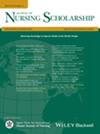Does synthetic data augmentation improve the performances of machine learning classifiers for identifying health problems in patient–nurse verbal communications in home healthcare settings?
Abstract
Background
Identifying health problems in audio-recorded patient–nurse communication is important to improve outcomes in home healthcare patients who have complex conditions with increased risks of hospital utilization. Training machine learning classifiers for identifying problems requires resource-intensive human annotation.
Objective
To generate synthetic patient–nurse communication and to automatically annotate for common health problems encountered in home healthcare settings using GPT-4. We also examined whether augmenting real-world patient–nurse communication with synthetic data can improve the performance of machine learning to identify health problems.
Design
Secondary data analysis of patient–nurse verbal communication data in home healthcare settings.
Methods
The data were collected from one of the largest home healthcare organizations in the United States. We used 23 audio recordings of patient–nurse communications from 15 patients. The audio recordings were transcribed verbatim and manually annotated for health problems (e.g., circulation, skin, pain) indicated in the Omaha System Classification scheme. Synthetic data of patient–nurse communication were generated using the in-context learning prompting method, enhanced by chain-of-thought prompting to improve the automatic annotation performance. Machine learning classifiers were applied to three training datasets: real-world communication, synthetic communication, and real-world communication augmented by synthetic communication.
Results
Average F1 scores improved from 0.62 to 0.63 after training data were augmented with synthetic communication. The largest increase was observed using the XGBoost classifier where F1 scores improved from 0.61 to 0.64 (about 5% improvement). When trained solely on either real-world communication or synthetic communication, the classifiers showed comparable F1 scores of 0.62–0.61, respectively.
Conclusion
Integrating synthetic data improves machine learning classifiers' ability to identify health problems in home healthcare, with performance comparable to training on real-world data alone, highlighting the potential of synthetic data in healthcare analytics.
Clinical Relevance
This study demonstrates the clinical relevance of leveraging synthetic patient–nurse communication data to enhance machine learning classifier performances to identify health problems in home healthcare settings, which will contribute to more accurate and efficient problem identification and detection of home healthcare patients with complex health conditions.

 求助内容:
求助内容: 应助结果提醒方式:
应助结果提醒方式:


